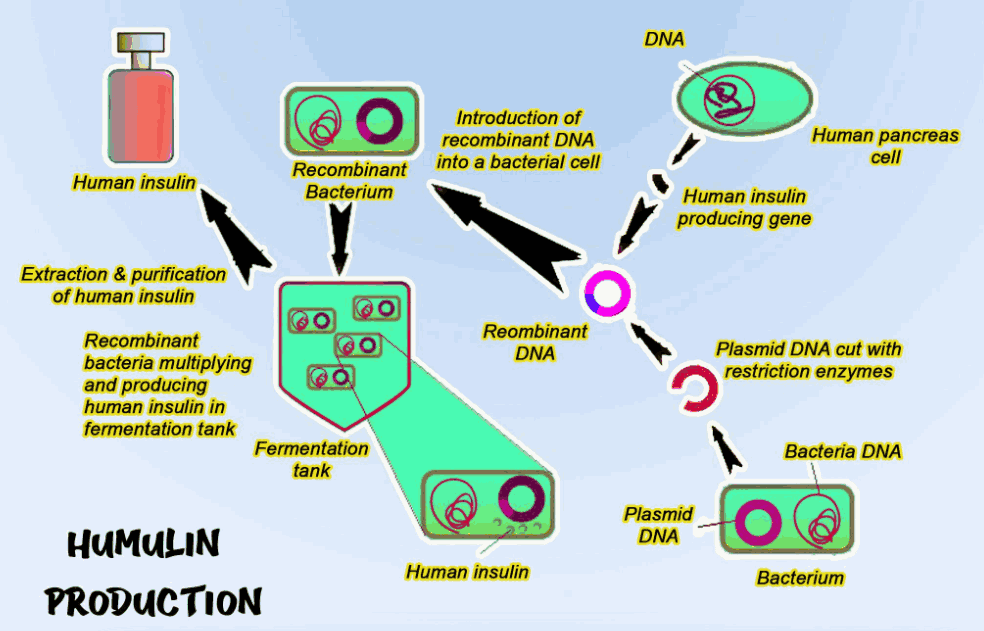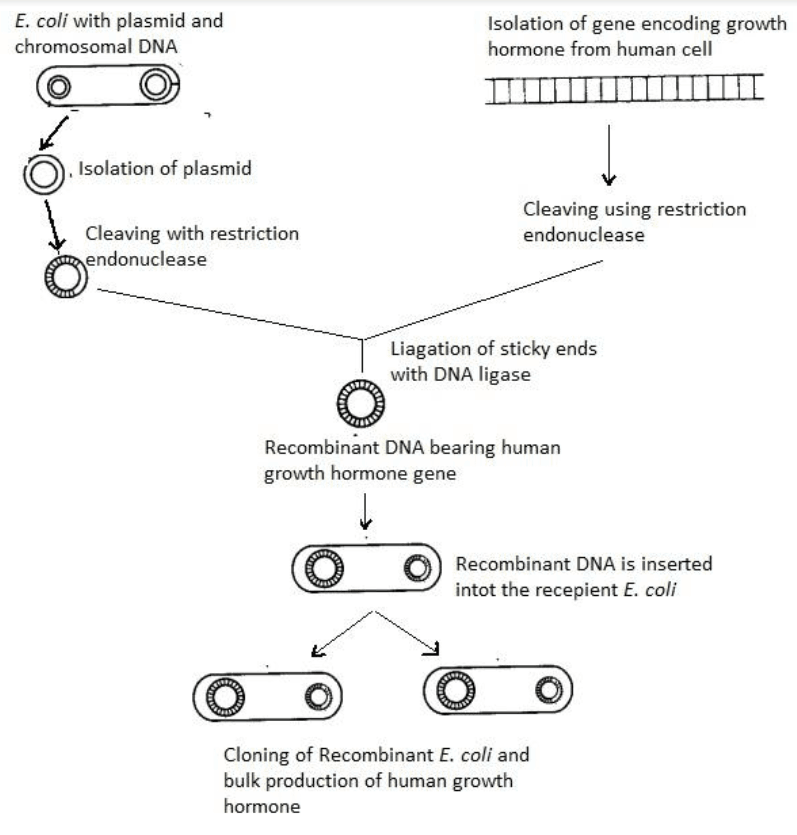Revision Notes for CBSE Class 12 Biology Chapter 10 (Biotechnology and its Applications) - Free PDF Download
FAQs on NCERT Solutions for Class 12 Biology Chapter 10 Biotechnology and Its Applications
1. What are the crucial topics in Chapter 12- Biotechnology and its applications?
As the name indicates, the chapter focuses mainly on the modern-day practical applications of Biotechnology and its developments. The chapter focuses on four main topics, namely:
Biotechnological applications in Agriculture
Biotechnological applications in Medicine
Transgenic Animals
Ethical issues
The first two topics are more weighted than the latter and have multiple subdivisions with a heavy emphasis on Genetics. The chapter will focus on Genetic Engineering applications like Genetically Modified Organisms, Genetically Engineered Crops, and medicine, and Gene therapy, to name a few.
2. How many questions and exercises of this chapter are in the CBSE NCERT textbook?
Chapter Biotechnology and its Applications have ten questions in the exercises section. The breakdown of these questions are as follows:
- Short Answers (1 word, MCQ, less than 2 Sentences) - 4 Questions
- Long Answers (2 Sentences or more) - 6 Questions
3. What kind of question would be asked the most?
The questions can be short answer types, ranging from fill in the blanks or MCQ to small answers with 1-2 sentences and an example if required. Long answer type questions are usually definitions of terms or descriptions of processes, along with their use/application and examples if needed.
4. How will Vedantu’s NCERT Solutions help with this chapter?
The major problem that a lot of students face with Biology is the lack of understanding of the theory. Mugging up terms and definitions can cause students to forget or mix up their answers. Therefore, learning the chapter through understanding, it is important to retain knowledge.
Our NCERT solutions perform a key function in this regard. They are prepared and curated by experts who dedicate time and effort into ensuring that you understand the concept. The theory and the solutions are explained in the best way to connect the theoretical knowledge to the solutions, helping to understand the concepts better through practice.
5. How is Chapter 10 Biology Class 12 important for board exams?
To secure a perfect score in exams, one needs to be thorough in all the chapters. When it comes to exams, questions can be from anywhere in the book. so it is important to learn all the chapters in Biology. To make the studies easier, Vedantu offers NCERT solutions for all the chapters. Also, this chapter carries a heavy weightage. To download the Solution PDF of Chapter 10 Biology Of Class 12, visit vedantu website and the app.
6. How can I understand Chapter 10 Class 12 Biology?
Students find it easier to mug up concepts instead of understanding them, but with the help of Vedantu experts, the concepts in chapter 10 are simplified. Download a free PDF on NCERT Solutions of Chapter 10 Biology, and use them to understand and revise the concepts. The solutions are given in a simple language to help you understand better.
7. What is the best study material for Chapter 10, Class 12 Biology?
The best study material students can use for their exams is NCERT solutions. Vedantu provides NCERT Solutions for all the chapters created by the experts. Visit the page-NCERT Solutions for Class 12 Biology to download the free PDF of the NCERT solutions to prepare for your exams. One of the major advantages of having Vedantu Solutions is that it is curated in a simple language, keeping all the CBSE guidelines in mind.
8. What are the important questions in Chapter 10, Class 12 Biology?
Vedantu offers a PDF of important questions prepared by the experts to make the learning easier for the students. Mainly, the question about the uses, importance, and applications of biotechnology will be encountered by the students. You can go through the Vedantu website to access all the important questions that can even come for the exam.
9. What are the topics covered in Chapter 10 Biology Of Class 12?
The topics covered are:
Biotechnological applications in Agriculture.
Biotechnological applications in Medicine.
Transgenic Animals.
Ethical issues.
Download NCERT solutions from the vedantu website or the app to get well versed in the topics given in Chapter 10, Biology.

























